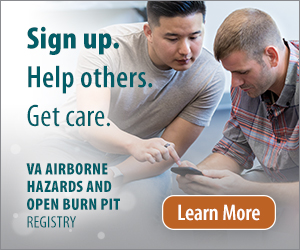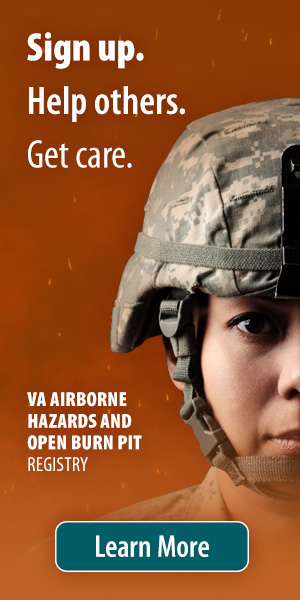
Increasing enrollment in VA’s Burn Pit Registry
U.S. Department of Veterans Affairs
The story.
In 2014, the Department of Veterans Affairs (VA) established the Airborne Hazards and Open Burn Pit Registry. The goal of the registry was to better understand the potential ill-effects from veterans’ exposure to smoke and toxic fumes from open burn pits. Veterans’ participation in the registry, however, remained low over the following years. By 2020, VA knew it needed to take a fresh approach to comply with a Congressional mandate to increase the number of veterans enrolled in the registry. That’s when it engaged DCG to develop a communications strategy to meet veterans’ information needs and address misconceptions of airborne hazards, toxic exposures, and the registry itself.
Services.
- Research
- Strategic communications
- Creative development
- Social media
- Paid media
- Radio media tours
- Web development
Solution.
DCG first conducted focus groups to understand veterans’ opinions of VA, reactions to existing registry outreach materials, and knowledge of the registry. Interviews with veterans who had engaged with the registry improved DCG’s understanding of the overall experience of enrollment, including barriers and motivators. Key insights that informed the development of a communications strategy comprising a mix of outreach, along with paid, earned, digital, and social media included:
- Using real-veteran spokespersons to share information, as well as improve credibility and impact.
- Clarifying “what’s in it for veterans” up front in any new materials.
- Avoiding triggering language and realistic images of fire, flame, smoke plumes, or explosions (including real images of combat or burn pits).
- Affirming that airborne hazard exposures can cause health issues.
- Focusing on what VA can do for veterans.
The strategy contained a tactical plan to operationalize recommendations, strategically sequencing development and execution of communications activities into three distinct phases: foundational content development, stakeholder engagement, and communications campaign launch. Highlighted activities within these phases included:
- The redevelopment and launch of PublicHealth.VA.gov/Airborne Hazards webpages, factsheets, and other educational materials, ensuring consistency of messaging across products.
- A radio media tour with Dr. Patricia Hastings, Director of VA Post Deployment Health Services, featured on 17 radio stations.
- A digital advertising campaign on Facebook, Google, RallyPoint, and We Are the Mighty, driving traffic to and increasing participation in the registry.
Impact.
By crystallizing the registry’s value to veterans and effectively overcoming any misperceptions through messaging, DCG’s research-based, veteran-focused communications strategy garnered:
- A 38.8% increase in average monthly new registry participation and a 41.1% increase in new questionnaire starts over monthly 2020 averages.
- Over 12,000 combined views for original VAntage Point blog posts highlighting the experiences of veterans who received life-saving care as a direct result of participation in the registry.
- Over 560 million impressions and 4.4 million clicks for paid media assets, resulting in a 0.78% click-through rate, meeting or exceeding platform and industry averages.
- 8 million impressions for radio interviews across national and local networks.
2023: Hermes Creative Awards Honorable Mention for Digital Advertising, Display Ads







